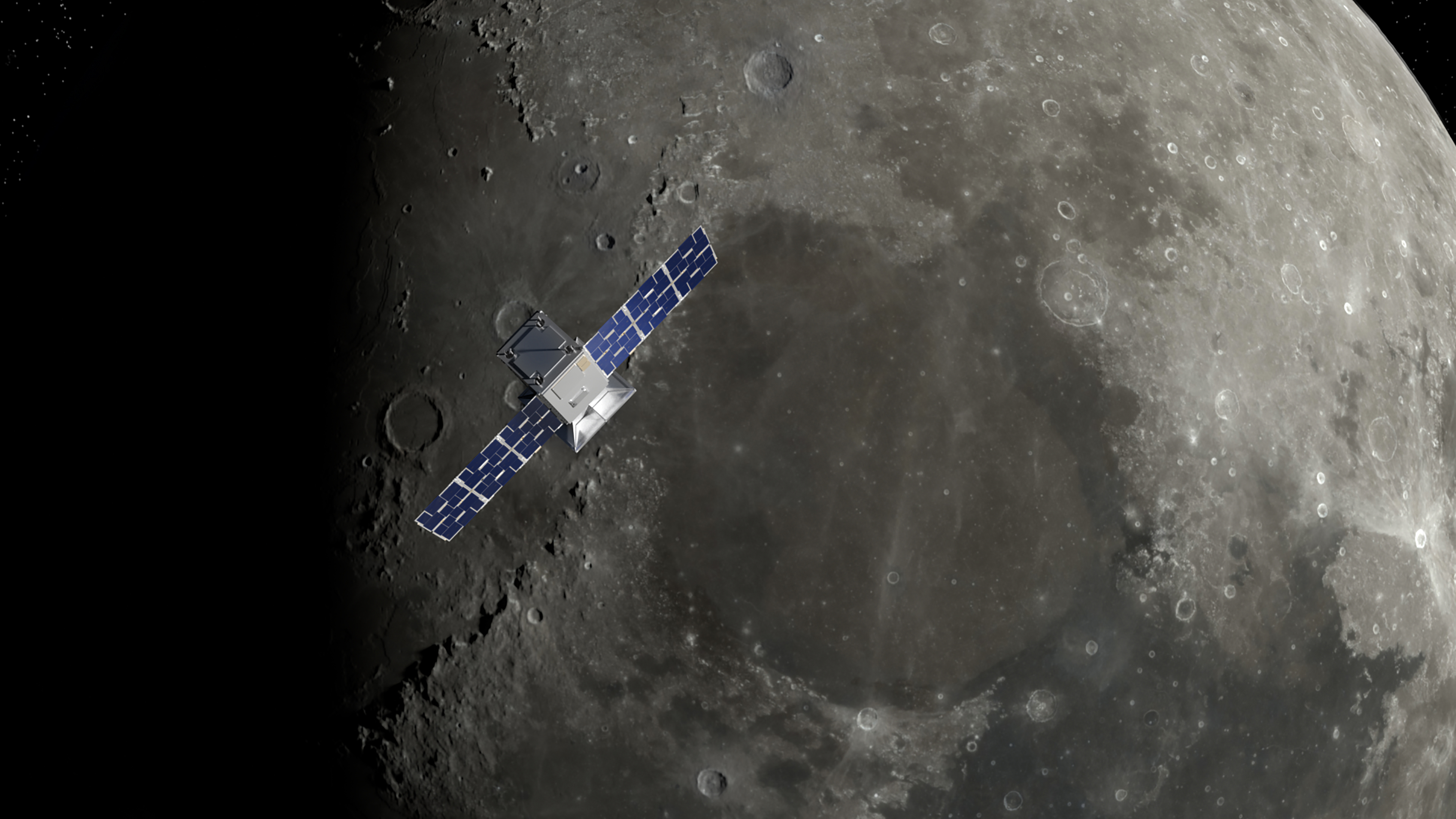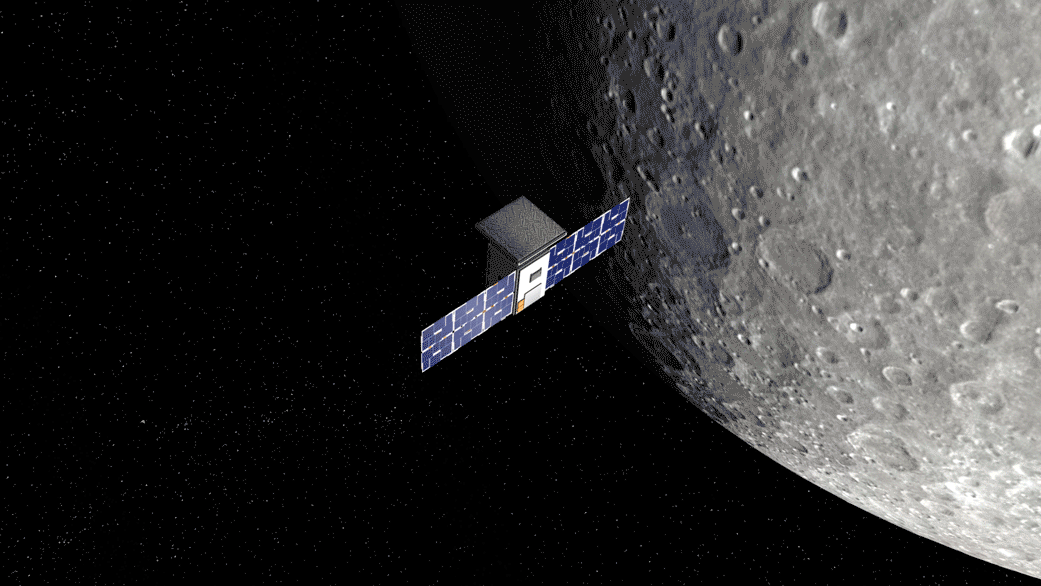NASA's tiny CAPSTONE moon probe has finally stopped tumbling in space
The moonbound CAPSTONE cubesat was in safe mode for a month, spinning out of control, after a stuck-open valve caused issues on the deep space mission.

NASA's moon-bound CAPSTONE probe is coming under control.
The microwave oven-sized CAPSTONE, which has been in safe mode for a month since an engine burn Sept. 8, finally stopped tumbling in cislunar space following a command from ground control.
The command executed Friday (Oct. 7) resulted in "clearing a major hurdle in returning the spacecraft to normal operations," NASA wrote in an update to its Artemis blog. (CAPSTONE is a pathfinder for the planned NASA Gateway space station's orbit, which will support moon operations under the Artemis program.)
The 55-pound (25 kilogram) spacecraft initially entered trouble following "a valve-related issue in one of the spacecraft's eight thrusters," NASA added, noting one of those thrusters was partially open and causing a spin. The team is now moving further ahead on their recovery plan before the cubesat's expected arrival at the moon on Nov. 13.
Related: Why it'll take NASA's tiny CAPSTONE probe so long to reach the moon
After reviewing CAPSTONE's telemetry and other observational information, NASA and the Colorado company Advanced Space (which operates the spacecraft on behalf of the agency) said engineers now have command of yaw, pitch and roll (the three axes of a craft's orientation) to control the cubesat's position in space.
"CAPSTONE now has oriented its solar arrays to the sun and adjusted the pointing of its antennas to provide a better data connection to Earth," NASA said, which presumably will allow further commands to stabilize the spacecraft even further.
Get the Space.com Newsletter
Breaking space news, the latest updates on rocket launches, skywatching events and more!
The agency hedged its success bets, however, noting the risks of this procedure alone were "significant" and that more tweaks might be needed to stop the partially open thruster valve from interfering again with CAPSTONE's position in space.
Nevertheless, the spacecraft "remains on track" to occupy and characterize a lunar near rectilinear halo orbit (NRHO), NASA emphasized, to test its stability ahead of Gateway's arrival in a few years.

Advanced Space did several spacecraft tests and ground simulations ahead of attempting the recovery, the company said in its own CAPSTONE update on Friday. The company added it is committed to helping the spacecraft along for "upcoming critical events" and to troubleshoot the valve closure "to further reduce the risk of future propulsive operations."
"The CAPSTONE mission team is grateful for the public and private support provided to the team during this challenging phase of the mission." added Advanced Space.
CAPSTONE, short for Cislunar Autonomous Positioning System Technology Operations and Navigation Experiment, launched atop a Rocket Lab Electron booster on June 28 and has already overcome another major glitch.
On July 4, the spacecraft went dark shortly after separation from Rocket Lab's Photon spacecraft bus. An improperly formatted command caused the issue and engineers addressed it successfully the next day.
Follow Elizabeth Howell on Twitter @howellspace. Follow us on Twitter @Spacedotcom or Facebook.
Join our Space Forums to keep talking space on the latest missions, night sky and more! And if you have a news tip, correction or comment, let us know at: community@space.com.

Elizabeth Howell (she/her), Ph.D., was a staff writer in the spaceflight channel between 2022 and 2024 specializing in Canadian space news. She was contributing writer for Space.com for 10 years from 2012 to 2024. Elizabeth's reporting includes multiple exclusives with the White House, leading world coverage about a lost-and-found space tomato on the International Space Station, witnessing five human spaceflight launches on two continents, flying parabolic, working inside a spacesuit, and participating in a simulated Mars mission. Her latest book, "Why Am I Taller?" (ECW Press, 2022) is co-written with astronaut Dave Williams.









